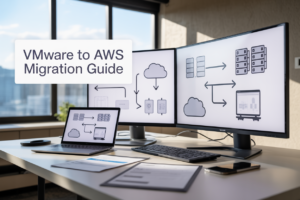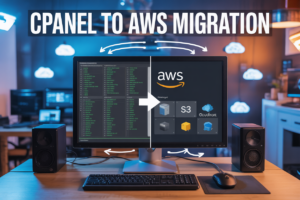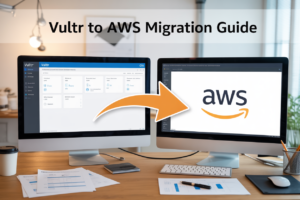Proper AWS Lambda naming conventions can make or break your serverless architecture’s maintainability and team collaboration. This guide is designed for AWS developers, DevOps engineers, and cloud architects who want to establish clear Lambda function naming standards that scale with their projects.
Inconsistent function names lead to confusion during deployments, debugging nightmares, and wasted time hunting through hundreds of Lambda functions. Smart serverless function naming creates a logical system that anyone on your team can understand at a glance.
We’ll walk through the essential components that make Lambda function names actually useful, including prefixes, environment indicators, and service identifiers. You’ll also learn strategic naming conventions for scalable Lambda architecture that prevent chaos as your serverless applications grow. Finally, we’ll cover technical implementation standards that ensure your Lambda naming guidelines work seamlessly with CI/CD pipelines and monitoring tools.
Essential Components of Effective Lambda Function Names

Function purpose identification through descriptive naming
Your Lambda function names should immediately tell you what they do. Instead of generic names like “handler” or “function1,” use descriptive names like “process-payment-webhook” or “resize-user-avatar.” This approach makes your AWS Lambda naming conventions crystal clear to anyone browsing your serverless architecture. Good Lambda function naming patterns include action verbs followed by specific objects, creating names that read like mini documentation.
Environment and stage differentiation strategies
Separating environments through consistent Lambda function naming best practices prevents costly deployment mistakes. Add environment suffixes like “-dev,” “-staging,” or “-prod” to distinguish between deployment stages. Some teams prefer prefixes like “dev-process-payment” or use middle positioning like “process-dev-payment.” The key is picking one pattern and sticking with it across your entire AWS Lambda architecture naming strategy.
Service and domain context integration
Group related functions by including service or domain identifiers in your serverless function naming scheme. For e-commerce applications, use prefixes like “inventory-,” “payment-,” or “user-” to create logical groupings. This AWS Lambda naming standards approach helps teams quickly identify function ownership and reduces confusion during incident response. Domain-driven naming also supports microservices architecture by making service boundaries obvious.
Version and deployment tracking methods
Track function iterations through systematic versioning in your Lambda deployment naming conventions. Some teams append version numbers like “process-payment-v2” while others use semantic versioning patterns. Consider including deployment timestamps or build numbers for additional tracking capabilities. These Lambda naming guidelines become essential when managing blue-green deployments or rolling back problematic releases across your serverless infrastructure.
Strategic Naming Conventions for Scalable Lambda Architecture

Hierarchical naming structures for microservices
Successful Lambda naming conventions for microservices follow a clear hierarchical pattern that reflects your application architecture. Start with the domain or business unit, followed by the service name, then the specific function purpose. For example: ecommerce-inventory-updateStock or payments-gateway-processRefund. This AWS Lambda naming pattern creates logical groupings that make navigation intuitive for development teams. The hierarchical approach scales naturally as your serverless architecture grows, allowing teams to quickly identify related functions and understand service boundaries without diving into documentation.
Team and ownership identification patterns
Lambda function naming should clearly indicate which team owns and maintains each function. Incorporate team identifiers or department codes directly into your naming convention: mobile-team-userauth-login or data-eng-etl-processOrders. This approach supports accountability and streamlines incident response when issues arise. Consider adding environment prefixes like dev-mobile-team-userauth-login to further clarify deployment contexts. These AWS Lambda naming standards help organizations maintain clear ownership boundaries while enabling cross-functional collaboration through transparent naming patterns.
Cross-service dependency mapping through names
Smart Lambda naming conventions can reveal service dependencies and data flow patterns. Include upstream or downstream service indicators in function names: orderservice-from-cart-createOrder or notification-to-email-sendWelcome. This naming strategy makes architectural relationships visible at a glance, helping developers understand system integration points. When combined with consistent prefixes for data sources and destinations, these serverless naming conventions create a self-documenting architecture where function names tell the story of your application’s data journey and service interactions.
Technical Implementation Standards for Lambda Naming

Character limits and AWS naming restrictions
AWS Lambda function names support up to 64 characters and must follow specific patterns. Names can contain letters, numbers, hyphens, and underscores, but cannot start with numbers. The service restricts certain reserved words and requires unique names within each AWS region and account. Function names must match the pattern [a-zA-Z0-9-_]+ and cannot contain spaces or special characters like dots, slashes, or parentheses.
Case sensitivity and formatting consistency rules
Lambda function names are case-sensitive, making MyFunction and myfunction completely different resources. Organizations should establish consistent casing standards across all deployments. Popular approaches include kebab-case (user-authentication-service), snake_case (user_authentication_service), or PascalCase (UserAuthenticationService). Teams must document their chosen format and enforce it through automation to prevent naming conflicts and confusion during development cycles.
Special characters and delimiter usage guidelines
Limited special characters create challenges for complex Lambda naming patterns. Hyphens and underscores serve as primary delimiters for separating logical components. Hyphens work better for readability (api-gateway-proxy) while underscores suit environments preferring snake_case (api_gateway_proxy). Teams should avoid mixing delimiters within the same project and establish clear rules for when to use each character type based on organizational coding standards.
Regional and multi-account naming strategies
Multi-region deployments require careful naming coordination since Lambda functions exist within regional boundaries. Teams can include region identifiers (user-service-us-east-1) or maintain identical names across regions for consistency. Multi-account architectures benefit from account-specific prefixes (prod-user-service, dev-user-service) or suffixes. This approach prevents confusion when managing functions across different environments and enables clear identification of resource ownership and deployment targets.
Integration with Infrastructure as Code naming patterns
Infrastructure as Code tools like Terraform and CloudFormation often generate resource names automatically. Teams should align Lambda naming conventions with their IaC naming standards to maintain consistency. Terraform resources might use variable interpolation (${var.environment}-${var.service_name}-lambda) while CloudFormation employs parameter references. The key is ensuring generated names follow the same patterns as manually created resources and remain predictable across different deployment methods.
Operational Benefits of Consistent Lambda Naming Practices

Enhanced monitoring and logging capabilities
Well-structured Lambda function names transform CloudWatch monitoring from chaos into clarity. When you follow consistent AWS Lambda naming conventions, your logs automatically group by environment, service, and function type. Teams can quickly filter through thousands of log entries using predictable naming patterns, making production incidents manageable rather than overwhelming.
Streamlined debugging and troubleshooting processes
Debugging becomes exponentially easier when Lambda function names follow established patterns. Engineers can instantly identify which service owns a failing function, what environment it runs in, and its specific purpose. This reduces mean time to resolution from hours to minutes, especially in complex serverless architectures where multiple functions interact across different AWS regions.
Improved cost allocation and resource tracking
Smart Lambda naming standards enable precise cost tracking across departments, projects, and environments. AWS Cost Explorer can automatically tag and categorize expenses when function names include business unit identifiers. Finance teams gain visibility into which teams consume the most serverless resources, enabling accurate chargeback models and budget planning for Lambda deployments.
Simplified deployment pipeline management
Consistent naming conventions streamline CI/CD pipelines by making deployment targets predictable and automatable. Infrastructure as Code templates can reference functions using pattern-based naming, reducing deployment errors and configuration drift. DevOps teams spend less time debugging deployment failures when function names clearly indicate their intended environment, version, and deployment stage.
Advanced Naming Strategies for Enterprise Lambda Deployments

Multi-environment naming schema implementation
Enterprise Lambda deployments require systematic AWS Lambda naming conventions across development, staging, and production environments. Implement environment prefixes like dev-payment-processor, stage-payment-processor, and prod-payment-processor to maintain clear separation. This Lambda function naming pattern prevents cross-environment confusion and supports automated deployment pipelines.
Blue-green deployment naming conventions
Blue-green deployments demand distinctive Lambda function naming standards to differentiate between active and standby versions. Use color-coded suffixes such as order-service-blue and order-service-green alongside version numbers. This serverless naming convention enables seamless traffic switching and rollback capabilities while maintaining production stability during updates.
Canary release identification methods
Canary releases need specialized Lambda deployment naming strategies to identify traffic-split configurations. Incorporate percentage indicators like api-gateway-canary-10pct or timestamp markers such as user-auth-canary-20240315. These serverless function naming patterns help operations teams track canary performance metrics and manage gradual traffic migration effectively across your Lambda architecture naming structure.

Choosing the right names for your Lambda functions might seem like a small detail, but it makes a huge difference in how smoothly your team operates. Clear naming conventions help everyone understand what each function does, make debugging faster, and keep your serverless architecture organized as it grows. When you follow consistent patterns that include the service purpose, environment, and function role, you create a system that scales beautifully and saves countless hours of confusion down the road.
Start implementing these naming standards in your next Lambda deployment and watch how much easier it becomes to manage your serverless infrastructure. Your future self and your teammates will thank you when they can instantly understand your function’s purpose just by reading its name. Good naming isn’t just about organization—it’s about building maintainable, professional AWS environments that stand the test of time.




















